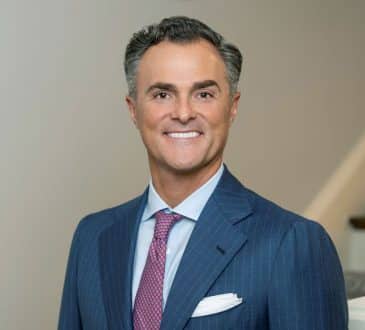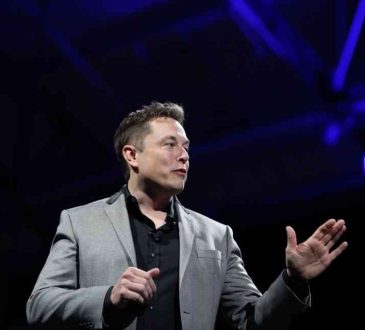Thinking Change – Think People First

As digitisation and what the World Economic Forum calls the ‘fourth industrial revolution’ changes how and where we work, the need to have a ‘people first’ mindset when executing change is more important than ever.
Whilst leaders often highlight the importance of getting the people side of an organisational change right, there is still much room for improvement particularly as the pace and breadth of change continues to rise.
Leaders are leading in an environment which is often:
- Ambiguous – the environment in which they are working is uncertain and shifting, which can leave people questioning their role and what they need to do
- Boundary-less – the work environment is changing and the normal boundaries of roles and work are altering
- Complex – problems are not predictable, and nor too are the solutions with dependencies and connections creating more complex environments
- Disruptive – leaders and organisations are constantly searching for the next ‘big’ thing and the quest to be innovative is never-ending
To survive and flourish in this environment, it is critical to master four key steps.
- Build and implement a sustainable approach
Many change efforts are started before the necessary planning and analysis takes place. For example, there’s often no or limited assessment of the organisation’s capacity to absorb the change, nor an understanding of the capability of impacted stakeholders to adopt the change.
Employees want to understand the ‘why’. Why the change is necessary, how the change connects to where the organisation is heading, and what it means for them and the work they do.
A considered and well-executed approach has five core elements:
A) Ensure strategic alignment – this involves understanding what’s driving the change – is it external (such as new regulation or new entrants) or internal factors (such as a new CEO or productivity challenges)? Also be clear on the organisation’s end goals and its objectives, and how this change connects and supports its vision and strategic agenda.
B) Consider the options – develop and review the options available to address, and the potential risks and impacts of them. The options selected should have a clear benefits case so the organisation can measure if the intended benefits of the change have been delivered.
C) Develop the plan – undertake the necessary planning to map out the steps to take to make the change happen. This is not about creating an inflexible plan, but it is about having a strong sense of direction, and clarity on the way ahead and what is needed for success. This includes considering other change initiatives underway and the connections, so dependencies are factored in. This helps to ensure the best sequencing of the change initiatives, taking into account the impact on employees.
D) Check the infrastructure – identify and ensure the necessary infrastructure to implement the plan is available and in place. This involves architecting the way in which the change program is sequenced, monitored, governed and executed to account for the organisation’s capacity to absorb, and the capability of its employees to adapt.
E) Balance the people equation – this is critical and is more than just communication and training. Helping people thrive through change is most effective when it operates at a mindset, values and behaviour level. This includes providing people with the personal and technical skills to help them best operate in the changing environment. - Know the landscape
Once the approach to the change has been outlined, it’s helpful do a stocktake and determine if the leaders and employees are ready, willing and able to change.
This assessment helps to highlight any gaps that need to be addressed to help improve the likelihood of a successful and sustainable change.
A) Ready – the leaders know where they want the organisation to get to, and have a plan for execution, with a logically and thoughtfully sequenced change roadmap that accounts for the impact on employees and customers/clients.
B) Willing – the organisation has effective leadership and the roles and responsibilities of those involved with the change are clear. For example, there may be a sponsor who is accountable for the change, and a project team helping to deliver the change, along with key involvement from risk and compliance personnel.
C) Able – the organisation’s leaders have the capacity and capability to execute the change and are able to invest the resources to ensure that impacted stakeholders are well prepared for it. - Develop leadership followship
Warren Buffett said: “A leader is someone who can get things done through other people”.
Leaders don’t lead if there is no one following them. Leaders who can inspire and support those around them are essential in times of change. Having leadership followship requires the organisation’s leaders to be able to build engaged and healthy teams. Teams which in turn create a groundswell of support and movement towards the change.
In times of change it is not just the team and individuals who need to change.
To consciously lead change, leaders to be prepared to change themselves. However, it’s much easier for a leader to sit back and identify how team members or colleagues need to change, than to identify what may need to change in them.
To effectively lead change, leaders need to firstly understand themselves and then be open to shifting their mindset, operating style and behaviour to suit the context of the change.
Harvard professors, Robert Kegan and Lisa Lahey, who have studied why many crucial change efforts fail, found that one of the core problems is the gap between what is required and a leader’s own level of development.
In their book, How the way we talk can change the way we work, they state: “…it may be nearly impossible for us to bring about any important change in a system or organisation without changing ourselves (at least somewhat)…”
Understanding what changes are required goes beyond pinpointing new technical skills.
It’s about delving into the meaning that drives a leader’s behaviour, and the mental models they apply to the decisions they make. The prism through which a leader views the world shapes how they think, react and act.
One way to do this is for the leader to identify their ‘leadership moments of truth’. These are the actions that they take – often subconsciously – which define how their leadership style is viewed by others.
It includes, for example:
A) What they pay attention to and their priorities
B) How they react to issues and problems
C) What they say, and what they do and don’t do
D) How they allocate resources and rewards, and recruit and promote
Red flags arise when a leader’s behaviour is inconsistent, as team members quickly notice when a leader says one thing, and then does another.
How leaders engage with, support, involve and communicate with their team will determine if a change is landed safely or not. - Maintain momentum
The word ‘progress’ commonly means to ‘move forward’ or ‘advance’. Its definition implies that progress is always a forward action.
But progress in times of change isn’t that simple. It comes in many shapes and sizes, and it can feel like one step forward and then one step backwards.
As Harvard academic, Rosabeth Moss Kanter, said: “Everything can look like failure in the middle”.
Persevering despite set-backs and pushing through the hard middles isn’t easy. It’s much easier to lose focus, and for leaders to divert their attention to something else that looks easier to achieve.
However, change that is hard to achieve is worth striving for and when change is driven by a need to improve regulatory, risk and compliance outcomes there is enhanced criticality.
To help teams stay the course there’s a critical factor for leaders to consider – finding ways to show progress.
The importance of progress was demonstrated by a 2010 study reported in the Harvard Business Review. The researchers, Amabile and Kramer, asked leaders and employees what they thought motivated employees. There were five options:
A) Recognition for good work
B) Incentive and rewards
C) Sense of progress
D) Clear goals and targets
E) Inter-personal connections.
The managers thought the answer was recognition for good work. But for the employees it was progress.
The researchers found that when workers thought they were making headway in their jobs, or when they received support that helped them overcome obstacles, their emotions were the most positive and their drive to succeed was at its peak.
In contrast, on the days when they encountered roadblocks and setbacks their motivation was at its lowest.
Leading change can be challenging and as the reality of the nature of the change hits home, leaders can become uncertain as they see momentum waning and milestones slipping. The team starts to question their ability to deliver, and teamwork starts to suffer as people look for someone to blame for the lack of progress.
It is at this point that project deliverables start to be de-scoped, activities reprioritised, and the project team is often restructured.
This is the time that change leadership really needs to come to the fore. It’s critical to:
A) Be clear on the project’s goals and what every person in the team needs to do to get there
B) Break the goals into manageable deliverables so progress can be more easily made
C) Celebrate progress in a way that’s meaningful for the team
D) Focus on those areas where the team’s efforts will produce the most effective results
E) Work to eliminate the friction in the organisation that makes the change harder than it needs to be (eg removing bureaucratic processes and unnecessary activities)
Whilst it is hard battling through the ‘middle’, bravery and tenacity pay off.
Written by Michelle Gibbings.
Have you read?
Best Performing Arts Schools In The World.
Best Hospitality And Hotel Management Schools In The World.
Best Universities In The World.
Russia’s Rich List: Richest People In Russia.
100 Most Influential People In History.
Bring the best of the CEOWORLD magazine's global journalism to audiences in the United States and around the world. - Add CEOWORLD magazine to your Google News feed.
Follow CEOWORLD magazine headlines on: Google News, LinkedIn, Twitter, and Facebook.
Copyright 2025 The CEOWORLD magazine. All rights reserved. This material (and any extract from it) must not be copied, redistributed or placed on any website, without CEOWORLD magazine' prior written consent. For media queries, please contact: info@ceoworld.biz











